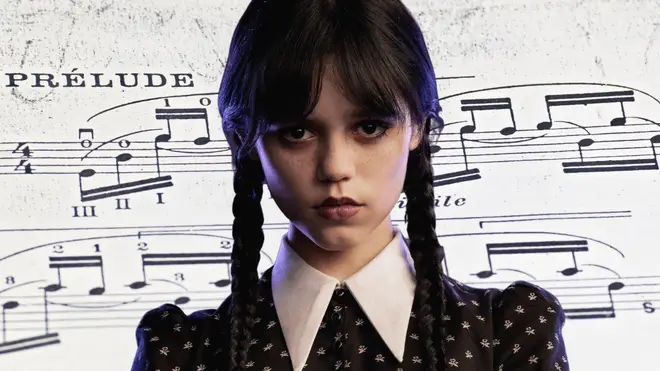What classical music is played in ‘Wednesday’ on Netflix?
6 December 2022, 17:46

Tim Burton’s hit Netflix series ‘Wednesday’ is his latest collaboration with film composer Danny Elfman, but the director also sneaks in some classical music references...
New hit Netflix series Wednesday stars Jenna Ortega as dark and misunderstood teenager Wednesday Addams, a sabre-wielding, cello-playing student at the Nevermore Academy for “outcasts, freaks and monsters”, and eldest child of Morticia (Catherine Zeta-Jones) and Gomez (Luis Guzmán) Addams.
Ortega’s portrayal of Wednesday sees the character perform arrangements of classic rock and metal songs for cello. The recordings themselves are by Finnish cello metal band, Apocalyptica, but Ortega took two months of lessons on the instrument in order to make Wednesday’s performance look all the more convincing.
In addition to Edith Piaf’s timeless ‘Non, Je Ne Regrette Rien’, Chavela Vargas’ ‘La Llorona’, and Wednesday’s dance to ‘Goo Goo Muck’ by The Cramps that has taken the Internet by storm, the Wednesday soundtrack also features some hidden classical music gems, by the likes of Elgar, Satie, and Rimsky-Korsakov.
Read more: Jenna Ortega learned to play Bach cello suites for hit Netflix series ‘Wednesday’
The first classical reference appears in the first episode, ‘Wednesday’s Child Is Full of Woe’, where Wednesday is seen playing her cello for the first time on the rooftop of the school.
Enid, Wednesday’s polar opposite werewolf dorm mate, comes out to check on her, with a sly ‘oversized violin’ question. The sheet music seen on Wednesday’s stand appears to be the Prelude to one of Bach’s Cello Suites.
Later, in the third episode ‘Friend or Woe’, Wednesday performs an arrangement of ‘Winter’ from Vivaldi’s The Four Seasons, and in the sixth episode, titled ‘Quid Pro Woe’, a painting of Wednesday playing the cello is animated by magic. As the portrait’s hand begins to draw its bow over the two-dimensional strings, we hear the dramatic opening to Elgar’s Cello Concerto leading seamlessly into the mournful main theme.
Later in the episode, Wednesday discovers a music box with a spinning ballerina. As she opens the lid, a plucked rendition of the ‘Aquarium’ from Saint-Saëns’ Carnival of the Animals emerges eerily from the box.
In the following episode, ‘If You Don’t Woe Me by Now’, Wednesday continues working on her novel at the typewriter as a vinyl turns on a record player, spinning out a classical guitar arrangement of Erik Satie’s Gnossienne No.1.
The final classical cameo appears in the season finale, ‘A Murder of Woes’. Enid, Wednesday’s werewolf dorm mate, receives a phone call, and a familiar melody rings from the phone’s tinny speakers. It’s instantly recognisable as Rimsky-Korsakov’s Flight of the Bumblebee. The caller, fittingly, is Eugene Ottinger, the president of the Nevermore Hummers (the school’s bee-keeping club).






















